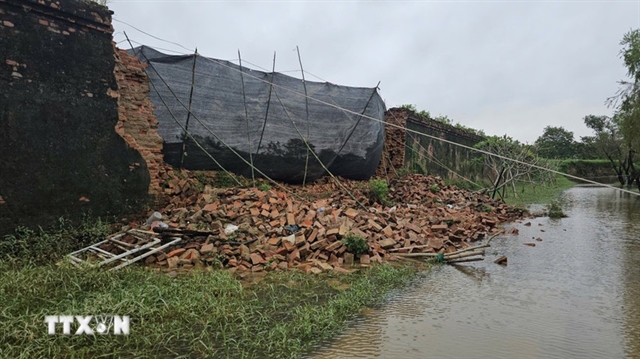- Global Claims Review 2022: Allianz Global Corporate & Specialty analyzed more than 530,000 insurance claims from 2017 to 2021 with a value of €88.7bn (US$90.4bn).
- Claims severity has increased while inflation will further challenge costs. Updating valuations of assets is key for companies and insurers.
- Contingent business interruption claims reach a new level driven by broken supply chains. Cyber claims remain elevated.
- Ukraine war: claims activity manageable for most insurance segments.
- APAC: fire/explosion ranks top cause of loss in Australia, China and Singapore
JOHANNESBURG/LONDON/MUNICH/NEW YORK/PARIS/SAO PAULO/SINGAPORE -
Media OutReach - 19 July 2022 - A fire at a busy warehouse leaves a company struggling to replace its buffer stock; a ransomware attack paralyzes a company's IT systems; the use of industrial adhesives in manufacturing results in a costly product recall: every day companies around the globe, together with their insurers, experience losses, in multiple forms, in the millions of dollars. Over the past five years, fire and explosion, natural catastrophes and faulty workmanship or maintenance have been the major causes of loss by value of insurance claims, according to the "
Global Claims Review 2022" from Allianz Global Corporate & Specialty (AGCS).
"Insurance claims from companies have become more severe over the past five years due to factors such as higher property and asset values, more complex supply chains and the growing concentration of exposures in one location, such as in natural catastrophe-prone areas," says AGCS Chief Claims Officer and Board Member Thomas Sepp. "The future does not look brighter anytime soon. Companies and their insurers have shown resilience to weather the loss impact of the pandemic, but the ongoing war in Ukraine, a spike in the cost and frequency of business interruption losses and the sustained elevated level of cyber claims are creating new challenges. At the same time, the top two causes of claims, fires and natural hazards, remain significant loss drivers for companies. Last but not least, the impact of soaring inflation around the world will bring further pressure on claims costs."
Inflation puts undervaluation of assets in the spotlight Ultimately, inflation brings pressure on claims costs from multiple angles. Property and construction insurance claims, in particular, are exposed to higher inflation, as rebuilds and repairs are linked to the cost of materials and labor, while shortages and longer delivery times inflate business interruption (BI) values. Other lines of insurance, such as directors and officers, professional indemnity and general liability, are also susceptible to inflationary pressures through rising legal defense costs and higher settlements.
"Replacement costs more and replacement takes longer, and this means both the property damage and the business interruption loss are likely to be significantly higher," says Sepp. "Updating insured values for all new contracts is therefore a pressing concern for insurers, brokers and insureds. If this doesn't happen, our clients run the risk of not being fully reimbursed in the event of a loss, while insurers run the risk of underpricing exposures. The insurance market has already seen a number of claims where there has been a significant gap between the insured's declared value and the actual replacement value." For example, in a claim for a commercial property destroyed in the 2021 Colorado wildfires, the rebuild value was almost twice the declared value, due to a combination of inflation, demand surge, and underinsurance.
An in-depth interview with Sepp on inflation and its impact on claims is available
here.
What are the top causes of business insurance claims? In one of the industry's most comprehensive analyses, AGCS has identified the top causes of loss for companies from more than
530,000 insurance claims in over 200 countries and territories that it has been involved with between 2017 and 2021 (typically a number of insurers provide coverage jointly considering the huge values at stake in the corporate sector). These claims have an approximate value of €88.7bn, which means that the insurance companies involved have paid out – on average – over €48mn every day for five years to cover losses.
The analysis shows that almost 75% of financial losses arise from the top 10 causes of loss, while the top three causes account for close to half (45%) of the value. Despite improvements in risk management and fire prevention,
fire/explosion (excluding wildfires) is the largest single identified cause of corporate insurance losses, accounting for 21% of the value of all claims. Fires have resulted in more than €18bn worth of insurance claims over five years, according to the analysis. Even the average claim totals around €1.5mn.
Natural catastrophes (15%) ranks as the second top cause of loss globally by value of claims. Collectively, the top five causes (based on more than 20,000 claims around the world) – hurricanes/tornados (29%); storm (19%); flood (14%); frost/ice/snow (9%) and earthquake/tsunami (6%) account for 77% of the value of all disaster claims. Hurricanes and tornados are the most expensive cause of loss, driven by the fact that two of the past five Atlantic hurricane seasons (2017 and 2021) now rank among the three most active and costliest on record, as well as recent record-breaking tornado activity. Insurers are also seeing new scenarios. During 2021, the 'Texas Big Freeze' in the US and flooding in Germany stood out as events that were both large but had unexpected claims. For example, the 'Texas Big Freeze' in February caused huge disruption to infrastructure and manufacturing, with many companies forced into shutdowns by widespread power outages, resulting in property damage and in some large contingent business interruption (CBI) losses. This event alone is estimated to have caused economic losses up to $150bn.
Faulty workmanship/maintenance incidents are the third top cause of loss overall (accounting for 9% by value) and are also the second most frequent driver of claims (accounting for 7% by number, ranking only behind
damaged goods with 11%). Costly incidents can include collapse of building/structure/subsidence from faulty work, faulty manufacturing of products/components or incorrect design.
The other top 10 causes of loss are:
aviation collision/crash (#4; 9%),
machinery breakdown (#5; 5%),
defective product (#6; 5%),
shipping incidents (#7; 3%),
damaged goods (#8; 3%),
negligence/misadvice (#9; 2%) and
water damage (#10; 2%).
Fire/explosion and
negligence/misadvice each account for 20% of the value of all claims in Australia, while
natural catastrophes (15%) rank third. A similar trend is observed in Singapore, where
fire/explosion (#1; 24%) is the top cause of loss followed by
negligence/misadvice (#2; 18%) and
machinery breakdown (#3; 16%). Notably, while fires rank first in terms of total loss value in Singapore, they rank low in frequency, only occurring in 4% of claims by number. In China, the top 3 causes of loss include
fire/explosion (#1; 19%),
defective product (#2; 13%) which is driven by China's status as the world's largest goods manufacturer, and then
shipping incidents (#3; 12%).
"Although bushfires and the recent floods in Australia make the headlines, fires in factories and other industrial production sites contribute to the largest share of losses," says
Volker Ziegs, Regional Head of Claims, Asia Pacific, AGCS. "Against a backdrop of higher property and asset values, as well as the interconnected nature of today's supply chains, fires can have significant downstream effects on other businesses around the world, resulting in severe interruptions to operations and culminating in higher final loss totals."
Business interruption losses on the rise The claims analysis also highlights the growing relevance of BI as a consequence of losses in property insurance, and the fact that
CBI
claims have reached a new high over the past year. Costs associated with the impact of BI following the aftermath of a loss can significantly add to the final bill from an incident. The average BI property insurance claim now totals in excess of €3.8mn compared with €3.1mn five years ago. For large claims (>€5mn), the average property insurance claim which includes a BI component is more than double that of the average property damage claim.
The number of CBI claims has increased year-on-year for the past five years, exemplifying the growing interdependence and complexity of corporate supply chains. The automotive industry alone has seen several CBI events during this period, with the overall growth in CBI claims exacerbated in the last two years by a large loss in the semi-conductor manufacturing sector and the 'Texas Big Freeze' event. The claims from these two events more than tripled the number of CBI claims in the previous three years.
While not appearing in the top 10 causes of loss, the number of
cyber claims has significantly increased over the past few years, driven by the rise of threats such as ransomware attacks, but also reflecting the growth of cyber insurance. AGCS has been involved in more than 1,000 cyber claims in both 2020 and 2021, compared with fewer than 100 in 2016. Claims frequency has begun to stabilize however, albeit at elevated levels.
The Covid-19 legacy and the Ukraine crisis The report also investigates the insurance impact of recent specific claims events such as the pandemic and the Ukraine crisis. Insured losses from Covid-19 are in excess of $40bn according to industry estimates, with the bulk of claims coming from event cancellation insurance and BI claims from companies affected by lockdowns. The pandemic has also had knock-on effects such as stressed supply chains, heightened inflation, and financial insolvencies.
Meanwhile, Russia's invasion of Ukraine is likely to result in a significant, yet manageable, loss for the global insurance industry. Insurers exposure to the conflict are limited by war exclusions, which are standard in most property/casualty insurance contracts. Expected insured losses from the war in Ukraine are comparable with a mid-sized natural catastrophe, according to AGCS, but specialist markets like aviation insurance could yet suffer disproportionately.
The report and further materials are available for download
here.
Hashtag: #Allianz
About Allianz Global Corporate & Specialty
Allianz Global Corporate & Specialty (AGCS) is a leading global corporate insurance carrier and a key business unit of Allianz Group. We provide
risk consultancy,
Property-Casualty insurance solutions and
alternative risk transfer for a wide spectrum of commercial, corporate and specialty risks across nine
dedicated lines of business and
six regional hubs.
Our customers are as diverse as business can be, ranging from Fortune Global 500 companies to small businesses. Among them are not only the world's largest consumer brands, financial institutions, tech companies and the global aviation and shipping industry, but also satellite operators or Hollywood film productions. They all look to AGCS for smart solutions and
global programs to their largest and most complex risks in a dynamic, multinational business environment and trust us to deliver an outstanding
claims experience.
Worldwide, AGCS operates with its own teams in
more than 30 countries and through the Allianz Group network and partners in over 200 countries and territories, employing around 4,250 people. As one of the largest Property-Casualty units of Allianz Group, we are backed by strong and stable
financial ratings. In 2021, AGCS generated a total of €9.5 billion gross premium globally.
Cautionary Note Regarding Forward-Looking Statements The statements contained herein may include statements of future expectations and other forward-looking statements that are based on management's current views and assumptions and involve known and unknown risks and uncertainties that could cause actual results, performance or events to differ materially from those expressed or implied in such statements. In addition to statements which are forward-looking by reason of context, the words "may", "will", "should", "expects", "plans", "intends", "anticipates", "believes", "estimates", "predicts", "potential", or "continue" and similar expressions identify forward-looking statements.
Actual results, performance or events may differ materially from those in such statements due to, without limitation, (i) general economic conditions, including in particular economic conditions in the Allianz Group's core business and core markets, (ii) performance of financial markets, including emerging markets, and including market volatility, liquidity and credit events (iii) the frequency and severity of insured loss events, including from natural catastrophes and including the development of loss expenses, (iv) mortality and morbidity levels and trends, (v) persistency levels, (vi) the extent of credit defaults, (vii) interest rate levels, (viii) currency exchange rates including the Euro/U.S. Dollar exchange rate, (ix) changing levels of competition, (x) changes in laws and regulations, including monetary convergence and the European Monetary Union, (xi) changes in the policies of central banks and/or foreign governments, (xii) the impact of acquisitions, including related integration issues, (xiii) reorganization measures, and (xiv) general competitive factors, in each case on a local, regional, national and/or global basis. Many of these factors may be more likely to occur, or more pronounced, as a result of terrorist activities and their consequences.
The matters discussed herein may also be affected by risks and uncertainties described from time to time in Allianz SE's filings with the U.S. Securities and Exchange Commission. The company assumes no obligation to update any forward-looking statement.
No duty to update The company assumes no obligation to update any information or forward-looking statement contained herein, save for any information required to be disclosed by law.

 Media-OutReach Newswire
Media-OutReach Newswire















